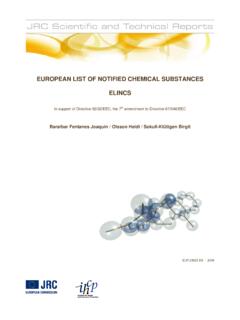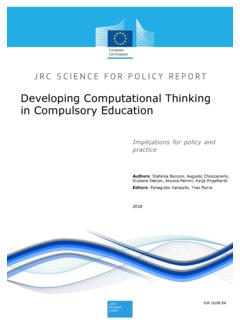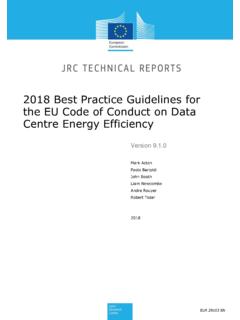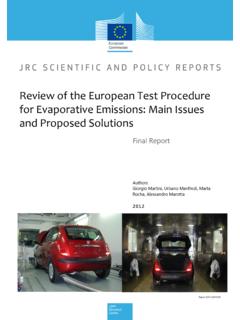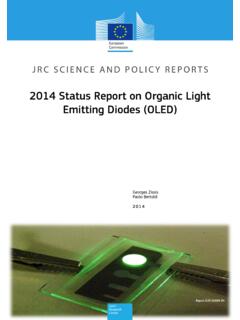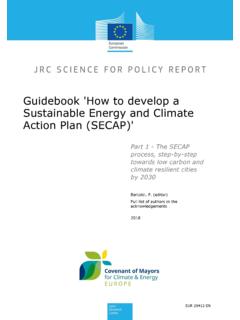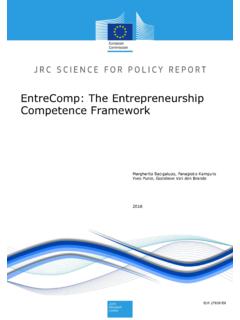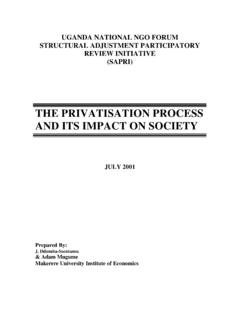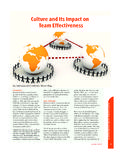Transcription of Algal bloom and its economic impact - Europa
1 Algal bloom and its economic impact Isabella Sanseverino, Diana Conduto, Luca Pozzoli, Srdan Dobricic and Teresa Lettieri 2016. EUR 27905 EN. Algal bloom and its economic impact This publication is a Technical report by the Joint Research Centre, the European Commission's in-house science service. It aims to provide evidence-based scientific support to the European policy-making process. The scientific output expressed does not imply a policy position of the European Commission. Neither the European Commission nor any person acting on behalf of the Commission is responsible for the use which might be made of this publication. Contact information Name: Teresa Lettieri Address: European Commission, Joint Research Centre Institute for Environment and Sustainability Water Resources Unit TP 121.
2 Via , 2749. 21027 Ispra (VA). Italy E-mail: Tel.: +39-0332789868. JRC Science Hub JRC101253. EUR 27905 EN. ISBN 978-92-79-58101-4 (PDF). ISSN 1831-9424 (online). (online). European Union, 2016. Reproduction is authorised provided the source is acknowledged. Printed in Italy How to cite: Isabella Sanseverino, Diana Conduto, Luca Pozzoli, Srdan Dobricic and Teresa Lettieri; Algal bloom and its economic impact ; EUR 27905 EN; Table of contents Acknowledgements .. 3. Abstract .. 4. 1. Introduction .. 5. 2. Algal Blooms .. 6. Principal groups of organisms generating Algal 8. Diatoms .. 8. Dinoflagellates .. 8. Cyanobacteria .. 10. Eutrophication and cyanobacteria growth .. 11. Cyanobacteria and climate 12. 3. Algal Blooms and toxins .. 14. 4. Algal Blooms incidence .. 19. 5. economic impacts of Algal 22.
3 Human health impacts .. 24. Commercial fishery impacts .. 26. Tourism/recreation impacts .. 29. Monitoring and management impacts .. 32. 6. Future Outlook .. 35. Conclusions .. 36. References .. 37. List of abbreviations and definitions .. 45. List of figures .. 46. List of 47. 2. Acknowledgements We thank Raquel Negr o Carvalho for critically reading the report and na Cullinan for the bibliographic support. 3. Abstract Harmful Algal blooms (HABs) represent a natural phenomena caused by a mass proliferation of phytoplankton (cyanobacteria, diatoms, dinoflagellates) in waterbodies. Blooms can be harmful for the environment, human health and aquatic life due to the production of nocive toxins and the consequences of accumulated biomass (oxygen depletion). These blooms are occurring with increased regularity in marine and freshwater ecosystems and the reasons for their substantial intensification can be associated with a set of physical, chemical and biological factors including climate changes and anthropogenic impacts.
4 Many bloom episodes have significant impacts on socio- economic systems. Fish mortality, illnesses caused by the consumption of contaminated seafood and the reluctance of consumers to purchase fish during HABs episodes represent only some of the economic impacts of HABs. The aim of this report is to evaluate the economic losses caused by HABs in different sectors. This was achieved by collecting data that exist in the technical literature and group them into four categories: (1) human health impacts; (2) fishery impacts; (3) tourism and recreation impacts; (4). monitoring and management costs. The data analysed refer to both marine and freshwater HABs. Among the sectors examined in this study, human health impacts appear less investigated than the other three categories. This is probably caused by the difficulty to assess the direct effects of toxins on human health because of the wide range of symptoms they can induce.
5 Looking at the data, the interest in mitigating the economic losses associated with blooms is particularly demonstrated by studies aimed to develop monitoring and management strategies to reduce HABs episodes. Indeed, the water monitoring, when accompanied by appropriate management actions, can assure the mitigation of ongoing HABs and the reduction of negative impacts. During data collection, it has been more difficult to find economic data about blooms in Europe than in United States of America (USA). A reason may be the lack of European reports or publically available data about HABs and their socio- economic impacts. Much studies still have to be performed in this field, but the reported increase in HABs frequency will surely increase not only scientific analysis about HABs but also economic studies to report whether safeguards taken have succeeded in mitigating the economic impact associated with blooms.
6 4. 1. Introduction Harmful Algal blooms (HABs) represent a natural phenomena caused by a mass proliferation of phytoplankton in waterbodies. The main groups of organisms generating HABs are diatoms, dinoflagellates and cyanobacteria. While diatoms and dinoflagellates are principally associated with blooms in seawater, cyanobacteria are most common in freshwater. All phytoplankton photosynthesize and their growth depends on different factors such as sunlight, carbon dioxide and the availability of nutrients, in particular nitrogen and phosphorus [1]. Additional factors influencing their life are water temperature, pH, climate changes, salinity, water column stability and anthropogenic modifications of aquatic environment including nutrients over-enrichment (eutrophication) [2, 3]. Eutrophication can result in visible Algal blooms which cause an increase in the turbidity of water and can create taste and odours problems.
7 During a blooms, algae can also produce nocive toxins that can render water unsafe and cause fish mortality or can impact human health through the consumption of contaminated seafood, skin contact and swallow water during recreational activities. Diatoms and dinoflagellates are involved in the production of toxins responsible for different poisoning in humans which interest mainly the nervous and the intestinal system [4]. Toxins produced by cyanobacteria pose also risk to human health in particular when water is used for recreational activity or for drinking [5, 6]. For this reason, globally, many countries have adopted standard measurements for limiting the presence in drinking water of Microcystin-LR, the most toxic and widespread hepatotoxin produced by cyanobacteria [7]. Sectors such as commercial fishery, tourism and recreation can be severely impacted by blooms [8-10].
8 Shellfish closure, the suspension of water recreational activities and monitoring and management plans adopted to reduce blooms are well-recognised impacts of HABs. They are also responsible for substantial economic losses which are likely to increase due to the reported intensification of HABs manifestations. In this report we have collected data about the economic impact of HABs on the following sectors: (1) human health; (2) fishery; (3) tourism and recreation; (4). monitoring and management. We reviewed the literature to identify scientific reports, papers and books about monetary data relevant to understand how HABs impact the economy. An internet search was performed using websites such as Google Scholar, consulting institutional websites like the European environmental protection agencies or obtaining data by economic journals ( Ecological Economics).
9 From all sources analysed we extracted monetary data and reported these values on our report. Most of the data referred to United States of America (USA), but we also found some information about Europe even if concerning only monitoring and management costs. Estimates of expenditures caused by HABs can be useful to understand the effectiveness of protective measures taken to reduce HABs events. This means they can help to evaluate the cost of actions adopted to assure a good water quality and to identify which are the most effective ones to use. Our overview, including only studies that specifically address the economic impacts of HAB, can be therefore a valid support to scientists to evaluate the more appropriate method for estimating the economic effects of Algal blooms and correlate this analysis with the cost-effectiveness of different approaches to reduce ongoing HABs and the subsequent negative impacts.
10 5. 2. Algal blooms Harmful Algal blooms (HABs) refer to a rapid proliferation of phytoplankton species such as dinoflagellates, diatoms, and cyanobacteria in aquatic ecosystems (Figure 1). HABs are natural phenomena which pose serious risks to human health, environmental sustainability and aquatic life due to the production of toxins or the accumulated biomass. Dinoflagellates in particular may be responsible for the formation of the so- called red tides (Figure 1A). Nowadays there are about 90 marine planktonic microalgae capable to produce toxins and most of them are dinoflagellates, followed by diatoms. Harmful impacts attributed to toxins have for many years led to poisoning in humans consuming contaminated seafood or in livestock. Toxins can accumulate in shellfish and filter feeding bivalves and their consumption by human populations may cause damage to different system of the human body such as the nervous and the intestinal system [4].
